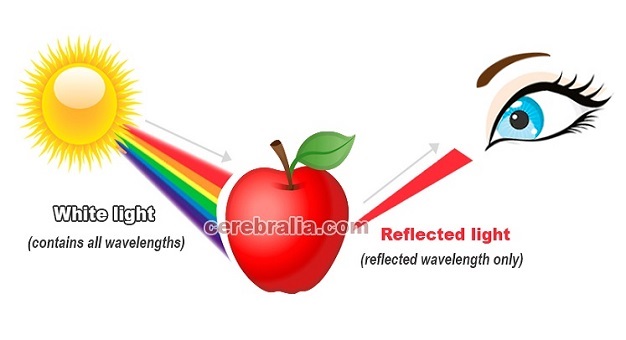Share on:
What is it about objects that give them color?
Light is a form of energy. The light coming from the sun is known as white light, which is broken down into different colors: red, orange, yellow, green, light blue, blue and violet. Light scattering is the separation of white light into its component colors by refraction.

This concept of the dispersion or decomposition of white light was demonstrated by Isaac Newton in the 17th century, through an experiment with a prism that was passed through by a ray of sunlight, which produced a band of colored light on the opposite wall. Newton called this pattern of colors the «visible spectrum».
The energy comes to the Earth from the sun through electromagnetic waves. The light beam passing through the prism generates a decomposition of the white light into different wavelengths.
Visible light
When light travels in space, it travels as a wave. And what happens is that each color of light has a different wavelength size. The human eye can detect what scientists call «visible light», which is only a small slice of a broad range of electromagnetic waves, called the «electromagnetic spectrum.»

The image above shows all types of Light wavelengths that are currently known. The «visible light» comprises wavelengths from 380 nm to 780 nm. It can be broken down into red, orange, yellow, green, light blue, blue and violet, and all their possible combinations. We are not able to see the other types of waves (radio, microwaves, infrared, ultraviolet, x-rays and gamma rays), although they do exist.
What determines the color of an object?
How light interacts with objects determines what we see. Light rays that come from a source such as the sun reflect off items and enter our eye. When the energy is taken up by the object, it's called absorption, and when the energy is bounced back by the object, it's called reflection.
Why are the leaves of trees green? Because they absorb all the spectrum of light that we can see except that which corresponds to green.

Absorption and reflection
All bodies are made up of substances that absorb and reflect electromagnetic waves, i.e. they absorb and reflect colors.
When an object reflects all the colors of the spectrum, the object appears white. The absorbed colors disappear inside the object, the reflected ones reach the human eye. The colors that we visualize are therefore those that the objects themselves do not absorb, but propagate.
An opaque body, i.e. not transparent, absorbs a large part of the light that illuminates it and reflects a more or less small part. When this body absorbs all the colors contained in white light, the object appears black.
Why do objects appear white?
When a body looks white, it is because it receives all the basic colors of the visible spectrum, and returns them reflected, thus generating the mixture of all colors: white.

White surfaces reflect most of the light that strikes them—roughly 90 percent. In contrast, black surfaces reflect only about 3 percent of that light.
Why do objects appear black?
We see the color of an object because that object reflects some light of the visible spectrum to the eye. Black is not a color, a black object absorbs all the colors of the visible spectrum and reflects none of them to the eyes. A black object may look black, but, technically, it may still be reflecting some light.

Why do you feel hot when you wear black clothes? While black objects absorb the energy from all colors and become hot, the objects gradually release some of that energy back into the air around it. Your body receives part of the heat energy that the black clothing radiates.
Why does an apple appear red?
The light that strikes the apple is white and is made up of several colors, but the light that reflects and reaches our eyes is red. This is because the apple absorbs all the other colors of white light and reflects only red. The same happens with the tomato, because our eye only receives the red light reflected by the tomato, since the tomato absorbs the other colors.

🥇 Find out more:
✅ What causes a rainbow, its colours and its shape?
✅ Why is snow white when ice is transparent?

